Sachsenhausen Concentration Camp
- Address: Straße der Nationen 22, 16515 Oranienburg, Alemania
- Tags:
 What to see Berlin,
Berlin,
Germany
What to see Berlin,
Berlin,
Germany
- Telephone: +49 3301 2000
- Website: www.stiftung-bg.de/gums/
Sachsenhausen Concentration Camp, near Berlin
Introduction
Sachsenhausen concentration camp is located in the town of Oranienburg, 35 kilometres north of Berlin, and so near enough to visit if you are spending some time in the capital.
A brief history
This concentration camp was built by the Nazis in 1936, and served as a location for the recruitment, punishment and/or murder of those who opposed the Nazi regime, as well as those who were considered inferior solely due to the fact they were Jews, gypsies, or other targeted groups. In 1936, the Nazis had not yet reached the height of their power, meaning that at the beginning the camp was originally intended solely for political prisoners, and cruel punishments and murders were not as common. However, after the start of the Second World War and the increase of the Nazis's power, according to the archives more than 30, 000 people were interned in this concentration camp, though it is estimated that in reality some 100, 000 people died here (and that more than 200, 000 prisoners in total passed through Sachsenhausen).
Sadly, the cruel deeds carried out on this site did not end with the fall of the Nazi regime in 1945, but continued when the Soviets transferred their NKVD Special Camp No. 7 to Sachsenhausen. It became the largest Special Camp in the Soviet occupation zone until 1950, the year in which it was vacated. The Soviet's use for the camp was no better than the Nazis's, but the amount of prisoners was lower at 60, 000, of which approximately 12, 000 lost their lives in the camp. The Soviet camp was used above all to house political prisoners, but other innocent people chosen arbitrarily were also sent there.
After the end of the Soviet occupation of Sachsenhausen, the site was converted into a commemorative memorial for the events which transpired there, and opened to public visits as the 'Gedenkstätte und Museum Sachsenhausen' (Sachsenhausen Museum and Memorial).
A strange but interesting fact is that it was also in this concentration camp that one of the most difficult money counterfeiting in history was carried out with the help of Jewish workers, named 'Operation Bernhard'. Since the Nazis could choose from the best Jewish artists and photographers, they were able to forge a large quantity of pounds sterling and dollars which were thought to be genuine due to their painstaking hard work. This Nazi-led operation helped to finance many of their activities, but the majority of these talented Jews were able to save themselves from almost certain death in the camp thanks to this work. A film was made about this great feat called 'Die Fälscher' (The Counterfeiters), which won Best Foreign Language Film at the Oscars in 2008.
Visit
When we got off the train, we found ourselves in a town with some small houses in the middle of nowhere. The way to Sachsenhausen from the train station isn't complicated though, since it is well sign-posted: if you are confused, just ask the local people and they will tell you where to go. They are very friendly and I think accustomed to people asking them how to get to Sachsenhausen.
You will recognise when you have arrived at the site, since there are some walls or slabs upon which stand the words 'Gedenkstätte und Museum Sachsenhausen'. The information centre is not far from this, and it's here you can rent an audioguide or ask any questions you might have.

Our visit began down a path with quite large photos on a wall to our left depicting the various stages in the camp's history and information about these. We continued on to the front entrance to the camp, but before we got there we encountered an outside area with crosses, tombs and inscription plaques dotted about. Your heart already starts to ache here...

We passed through the main entrance, Tower A, a white building whose features reminded me of the concentration camp entrances you see in films or videos set in this period. Once through the gate, we were confronted with a huge site with a few buildings dispersed over it. It's at this point that you start to really comprehend where you are: there was also snow everywhere and a grey sky, which made the atmosphere of our visit all the more chilling and depressing, though of course more realistic.
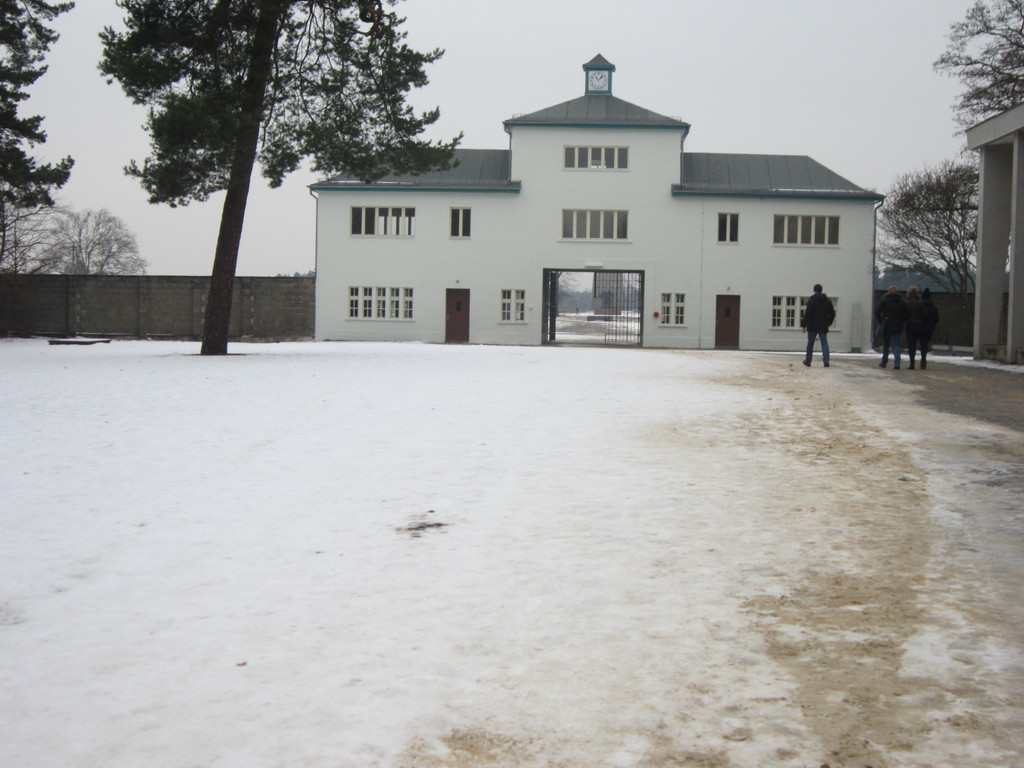
I remember that the first thing we visited was the barracks where the prisoners lived and slept alongside a large amount of small wooden bunk beds, their so-called 'bathrooms', tables for eating at and other areas where they carried out their everyday lives.
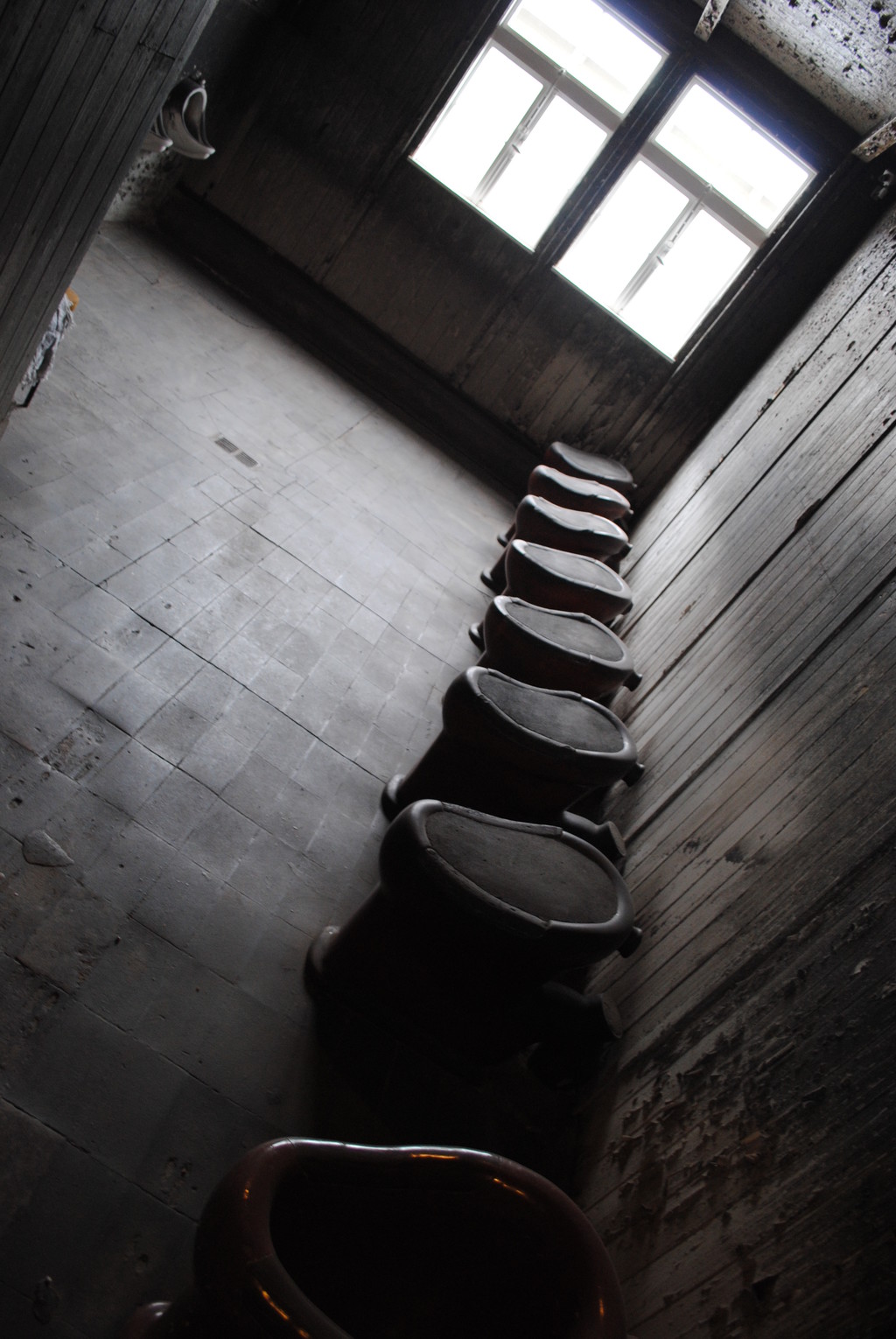
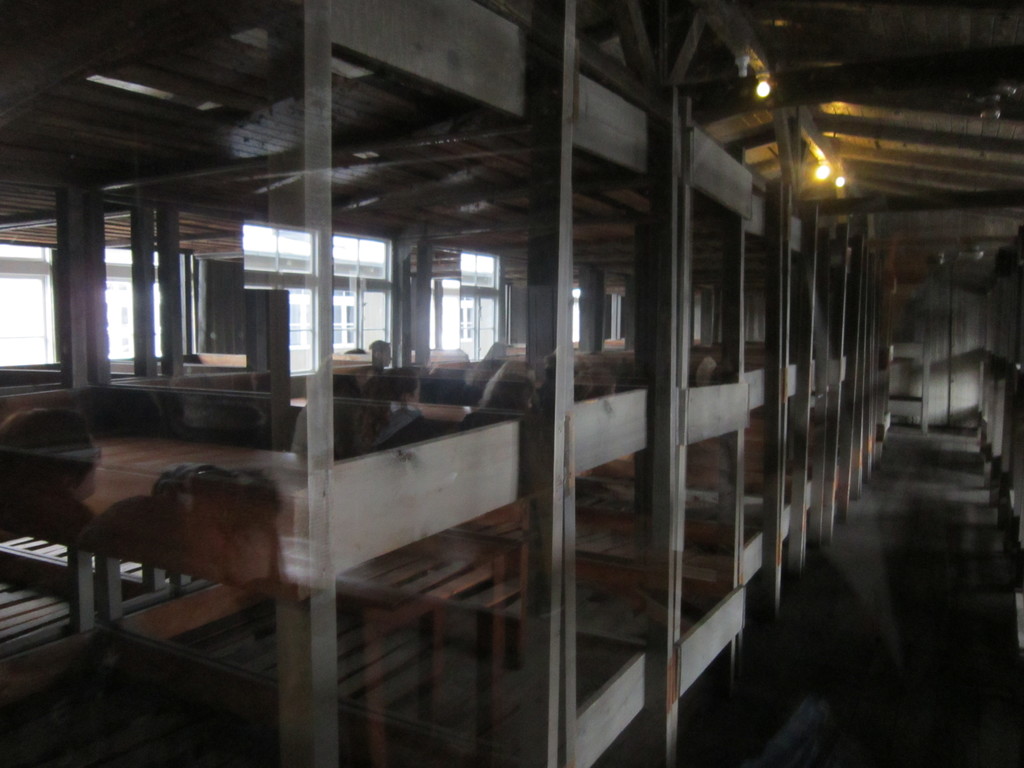
When we left the barracks, we saw three heavy wooden whips displayed vertically and parallel to each other, with a nail at their tops. These were used to torture the prisoners.
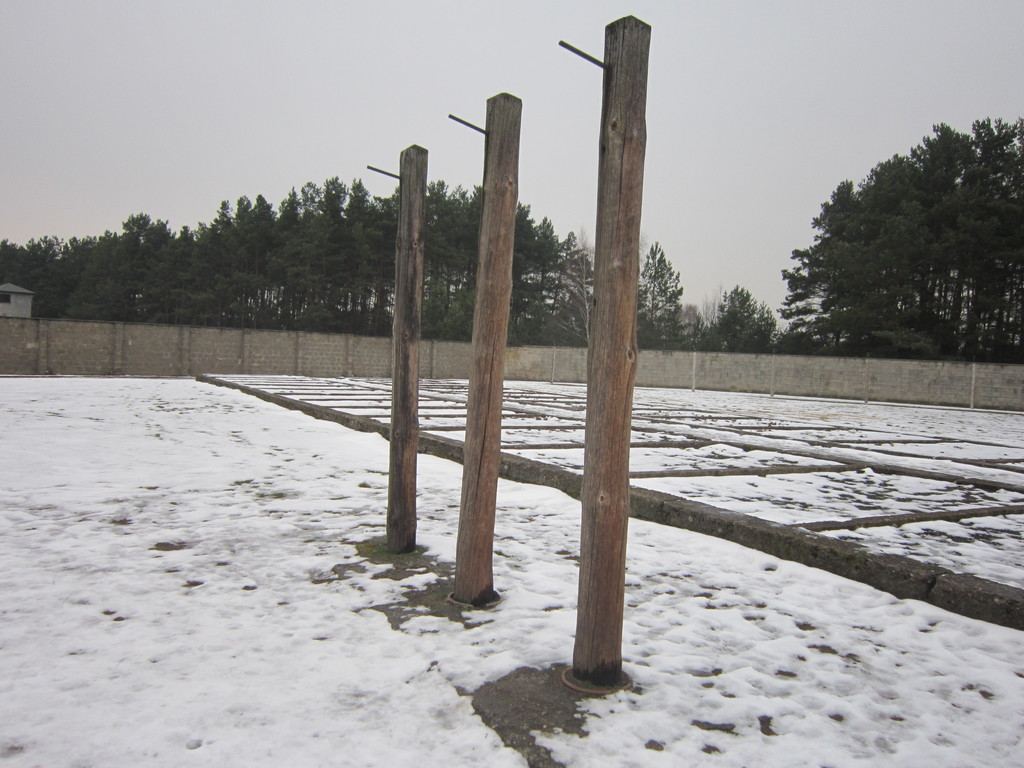
From here, we moved on to the cells, which were very small and occasionally featured information about important prisoners who were held there.

After that we visited the kitchen. The most striking thing in this area was the amount of drawings the prisoners had scrawled onto the walls, and this gave me a pleasant feeling, since it was the only colour we had seen in the whole place and it made me a little happier to think that they were at least allowed to express themselves in this one way. I don't understand why the Nazis didn't destroy the drawings, though (or punish them for it). The drawing I remember best was one of some carrots who wanted to cut up or hurt another carrot just because it was a different colour. Very meaningful.

Another room you mustn't miss is the projection room, where a documentary is shown explaining the camp's history from beginning to end, which helps to enrich your visit by telling you other interesting facts which you may have overlooked; additionally, actually visiting a concentration camp really submerges you in the history of what happened and you are completely focused on what you see there.
Other important areas are the walls where prisoners were lined up to be shot by firing squad (named Zone Z, being the final letter of the alphabet and therefore representing the end of life), the gas chambers and the wire fences which surround the whole camp. They're definitely not pleasant places to visit but it's important that you do while visiting, although I myself found it hard to really comprehend what happened there.
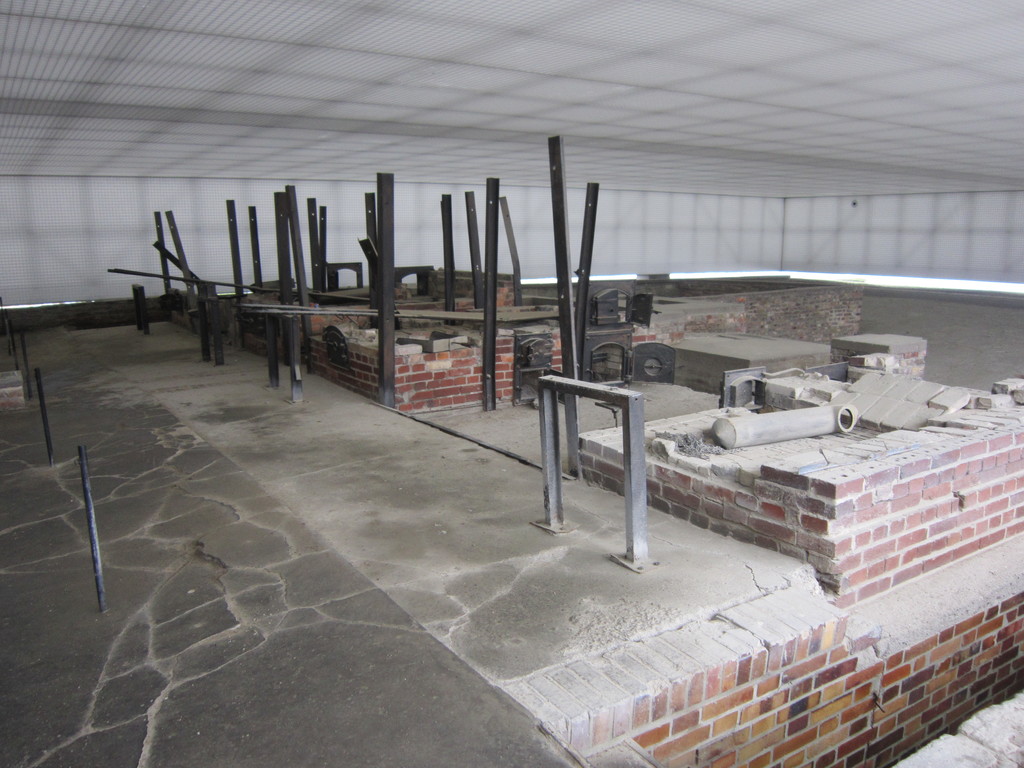

There are also two monuments within the camp, one in memory of the prisoners and one in memory of the camp's liberation.
The first is a sculpture of three men, one who appears to be dead, and whom the other two are supporting. On the plaque are the words 'In memory of the victims of Sachsenhausen Concentration Camp, 1936-1945' written in English and German.
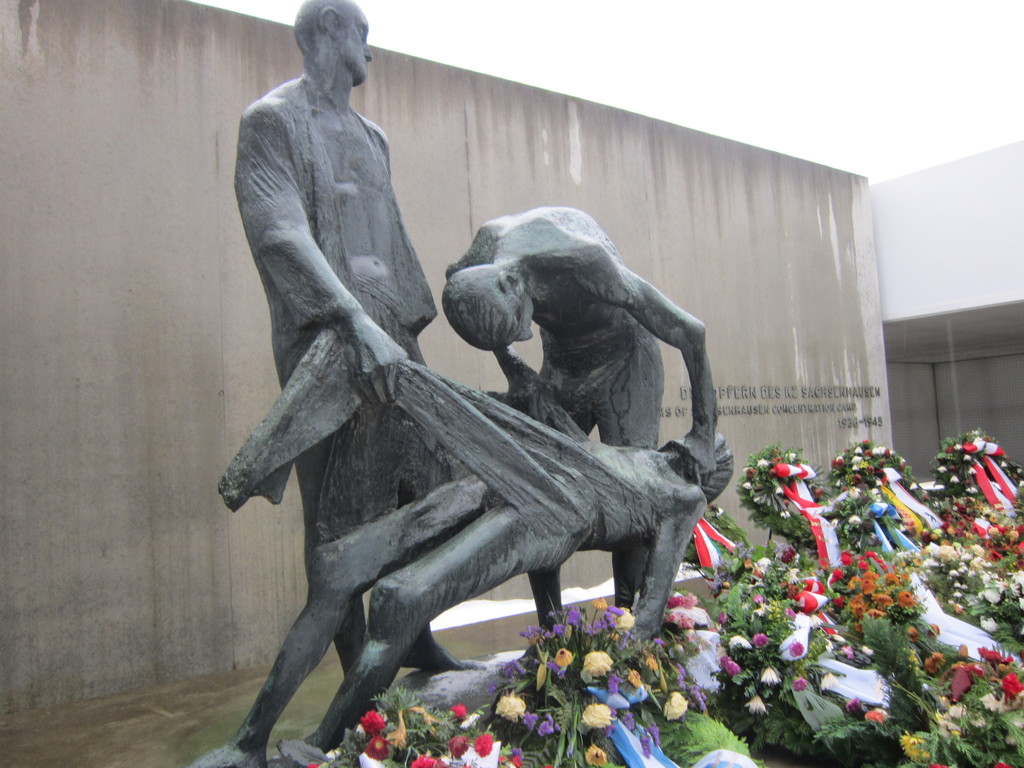
The second is an obelisk built in 1961 in memory of the victims and of the camp's liberation at the end of the Second World War: brown in colour, it consists of eighteen orange triangles which symbolize the nationalities of the victims who passed through the camp. On the obelisk's base, there's a statue of a Soviet soldier helping two prisoners.
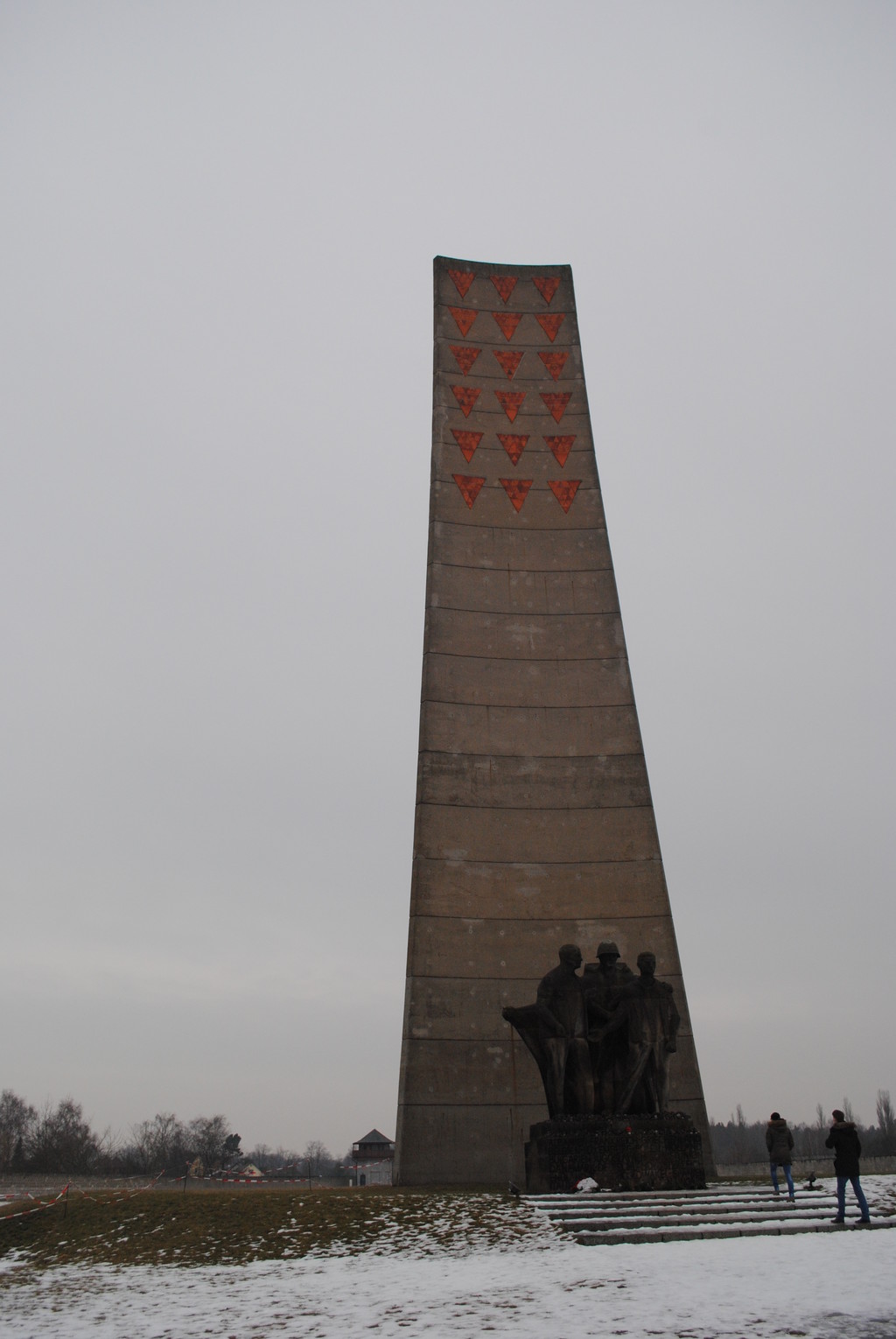
The last room we saw was absolutely horrifying: the autopsy and medical experimentation room. It's near to the exit, covered in white tiles and very different to all the other rooms due to its brightness. Thinking about what happened there is awful, and the audioguide tells you some horrible stories.

Opinion
My opinion on what I experienced here will be very similar to that of all the other visitors who have been here: the visit is not a pleasant one, but instead very interesting and emotional, and you don't come away without the place having left an impression on you. It's worth visiting because it makes you reflect a lot on life, and puts you in contact with part of our recent history which should never be repeated.
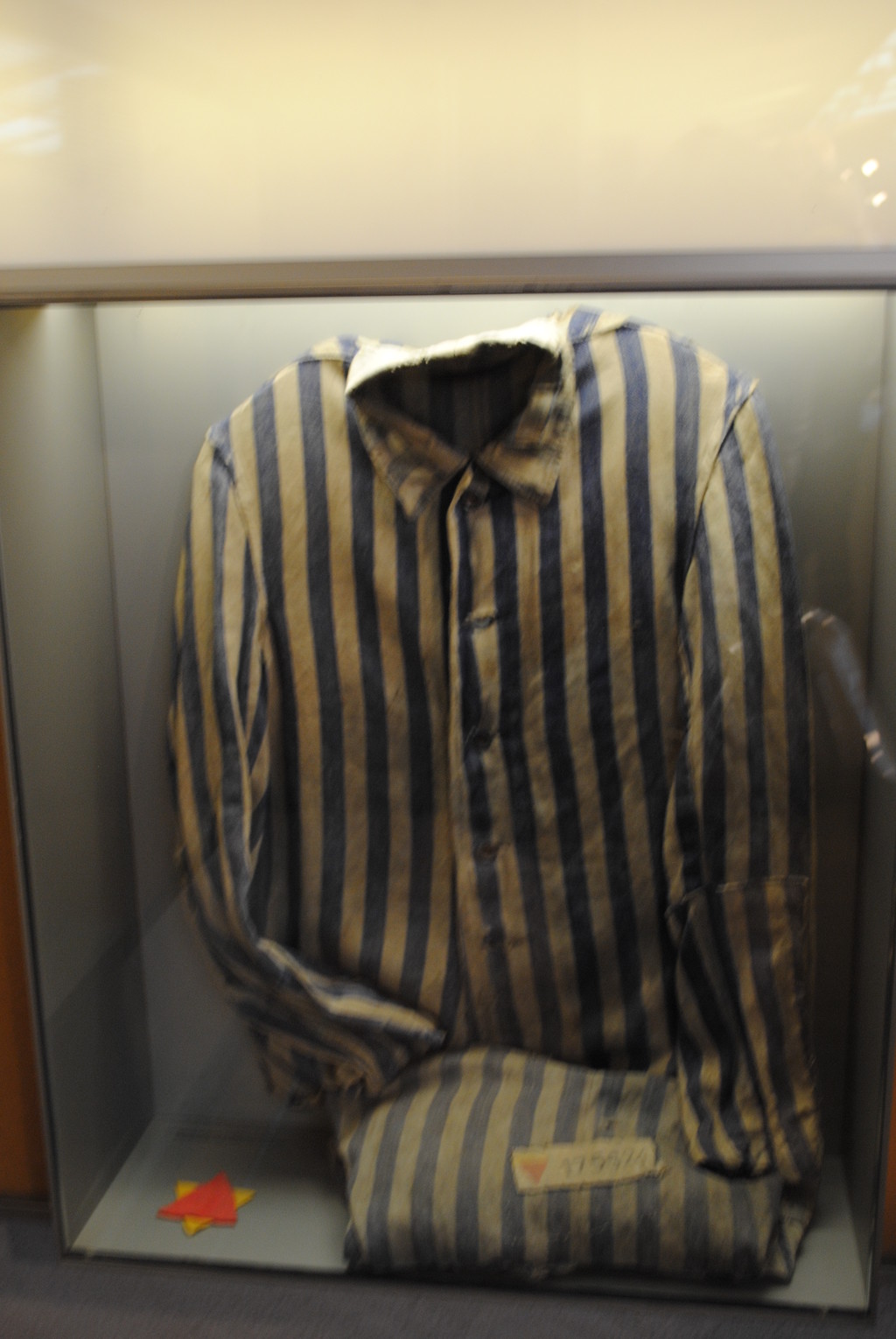
Entrance fee and opening hours
Sachsenhausen has no entrance fee, but I recommend renting an audioguide so that you can hear information about every part of the camp, making your visit much more interesting and worth the journey. Without it, you learn very little from just looking at the rooms. Since it's free to visit the site, 3 euros for an audioguide really isn't very much, and if you share it with someone else, then it's nothing at all. We shared one between two, although we visited as a three: one of us was from Taiwan, and the audioguides were language specific. This was fine though as you can simply share headphones if you rent an audioguide in a particular language.
The camp is open every day, from 8. 30am til 6pm from the middle of March until the middle of October, and from 8. 30am til 4. 30pm from the middle of October until the middle of March.
You need a few hours for your visit. It took up almost the whole morning travelling from Oranienburg to Berlin and visiting the site, and although we were only in Berlin for less than two days, I don't regret having gone to Sachsenhausen. You just have to organise your visit well and prepare yourself for the walking.
How to get there
To get to the Sachsenhausen Museum from Berlin, the best thing to do is to catch the RE train to Oranienburg. We caught the R5 to Oranienburg from Berlin Hauptbahnhof (Berlin main train station), and you can also catch the RE from Berlin Lichtenberg. The trains depart every hour. A one-way ticket (Einzelfahrausweis) costs 3. 30 euros, but it's better value for money if you buy a day ticket (Tageskarte) for around 7 euros which will allow you to return at whatever time you like and also travel around the rest of Berlin for the whole day. Get off the train at the station called 'Oranienburg'. When you arrive at the station, you can take bus number 804 to the camp, or walk there. We walked and it took us about twenty minutes, as the bus wasn't coming for a while, we were in a hurry and it was too cold to wait around. The bus station and the walking directions are all signposted with the word 'Gedenkstätte' (Memorial) - don't forget this, as we were looking for a sign for Sachsenhausen and there isn't one!
Photo gallery
Content available in other languages
- Español: Campo de concentración cerca de Berlín
- Français: Camp de concentration près de Berlin
- Italiano: Campo di concentrazione vicino a Berlino
- Português: Campo de concentração próximo de Berlim
Rate and comment about this place!
Do you know Sachsenhausen Concentration Camp? Share your opinion about this place.





























